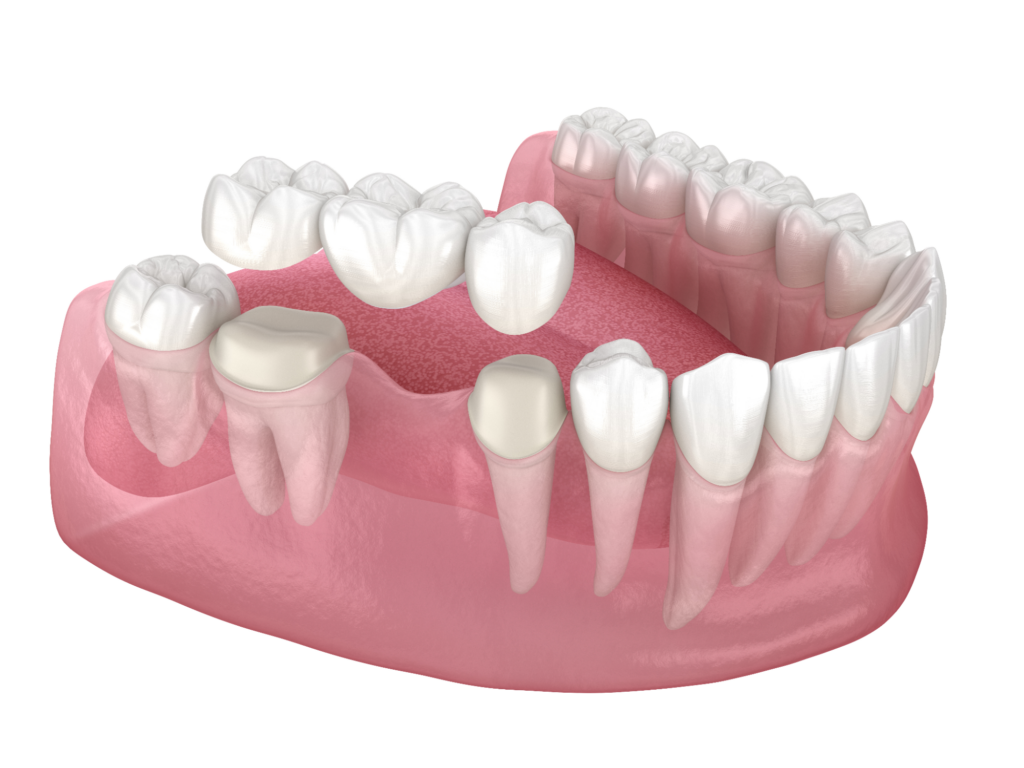Does a sharp, nagging pain on one side of your jaw leave you grimacing with discomfort? Jaw pain can be a real headache, figuratively and literally. Whether it’s due to a bout of stress-induced teeth grinding, a misaligned bite, or even a temporomandibular joint disorder (TMD), finding relief for that one-sided jaw pain is crucial. In this blog, we’ll explore the common causes behind jaw pain on one side and guide you through practical steps to alleviate the discomfort and regain your smile.
Common Cause of Jaw Pain on One Side
Jaw pain on one side can have various causes and your dentist may be able to diagnose the exact reason after a detailed examination. Some common contributing factors behind jaw pain may include:
Temporomandibular Joint Disorder (TMD)
The temporomandibular joint (TMJ), or the jaw joint, serves as the hinge connecting your lower jaw to your skull. Alongside the associated jaw muscles, this joint plays a critical role in enabling smooth jaw movements. TMD is a condition that affects the joints connecting your jaw to your skull. It can cause jaw pain, clicking or popping sounds, difficulty opening or closing your mouth, and even headaches. The exact cause of TMD is often hard to determine without a thorough examination, but it can be triggered by factors such as teeth grinding, jaw clenching, stress, or an abnormality in the joint’s structure. Read the next blog to explore the different treatment options available for TMD.
Dental problems
Dental issues like tooth decay, gum disease, abscesses, or impacted wisdom teeth can lead to localised jaw pain. Infections or inflammation in the oral cavity can also radiate discomfort to one side of the jaw.
Trauma or injury
An injury or trauma to the jaw, such as a blow to the face or a car accident, can result in localised jaw pain on one side. Fractures, dislocations, or muscle strain can cause immediate or delayed discomfort.
Sinus issues
Sinus problems, such as sinusitis or sinus infections, can cause pain on one side of the jaw. The maxillary sinuses, located above the upper jaw, share close proximity with the jaw joint, making them a potential source of jaw discomfort.
Arthritis
Arthritis, specifically temporomandibular joint arthritis, can cause chronic jaw pain on one side. This condition involves inflammation and degeneration of the jaw joint, leading to stiffness, limited jaw movement, and pain.
Remember, while these are common causes of jaw pain on one side, it’s essential to consult your dentist or healthcare provider for an accurate diagnosis and personalised treatment plan based on your specific situation.
How to Relieve Jaw Pain on One Side
In this section, we’ll explore some tried and tested techniques that have proven helpful in alleviating jaw pain on one side, such as:
Use heat
Applying heat to the affected area can help relax tense muscles and reduce jaw pain. You can use a warm compress, a hot water bottle, or a moist towel heated in the microwave. Gently apply the heat to the side of your jaw for about 15-20 minutes, several times a day, to soothe the discomfort.
Use ice or cold compresses
Cold therapy can help reduce inflammation and numb the pain. Wrap a cold pack or a bag of ice in a thin cloth and apply it to the painful area for 10-15 minutes at a time. Be sure to take breaks between applications to avoid potential skin damage.
Try nonprescription pain relief
Over-the-counter pain medications can provide temporary relief from jaw pain. Follow the recommended dosage instructions and consult with your healthcare practitioner if you have any underlying medical conditions or concerns.
Rest your jaw when possible
Giving your jaw a break by avoiding activities that aggravate the pain can help facilitate healing. Opt for softer foods that require less chewing, practise good posture, and avoid excessive talking or opening your mouth wide. Incorporating relaxation techniques and stress reduction practices into your routine can also assist in resting your jaw.
Try massage
Gentle massage of the jaw muscles can help alleviate tension and promote relaxation. Use your fingertips to apply light pressure in a circular motion to the affected area. Be cautious not to exert too much force or exacerbate the pain. You may also consult with a trained massage therapist for specialised guidance.
Try to relax
Stress and tension often contribute to jaw pain. Explore relaxation techniques such as deep breathing exercises, meditation, or yoga to help calm your mind and relax your jaw muscles. Engaging in activities that bring you joy and practising self-care can also help alleviate stress and promote overall well-being.
Change your sleeping position
Your sleeping position can impact your jaw and contribute to pain. Avoid sleeping on your stomach, as it can strain your jaw and neck. Instead, try sleeping on your back or side and consider using a supportive pillow to maintain proper alignment.
Even after all these measures, if your jaw pain persists or worsens, make sure to consult with your dentist for a comprehensive evaluation and personalised treatment plan.
Prevention of Jaw Pain on One Side
Prevention is key to avoiding the discomfort of jaw pain on one side. By implementing simple preventive measures, you can minimise the chances of experiencing jaw pain and maintain a healthy and pain-free life.
Maintaining good oral hygiene
Practising proper oral hygiene is essential not only for the health of your teeth and gums but also for the well-being of your jaw. Regular brushing, flossing, and routine dental check-ups can help prevent dental issues such as tooth decay and gum disease, which can contribute to jaw pain.
Avoiding chewing gum or hard foods
Excessive chewing of gum or consuming hard foods can place strain on your jaw joint and muscles, leading to one-sided jaw pain. Limiting your intake of chewy or tough foods and avoiding excessive gum chewing can help alleviate unnecessary stress on your jaw, reducing the chances of experiencing discomfort.
Wearing a mouthguard at night
If you tend to grind your teeth while sleeping, wearing a mouthguard can help. Teeth grinding, known as bruxism, can strain the jaw joint and muscles, resulting in one-sided jaw pain. A custom-fitted mouthguard creates a protective barrier between your upper and lower teeth, preventing grinding and minimising the risk of jaw pain.
Stress management
High levels of stress can lead to teeth clenching or jaw tightening, putting undue pressure on the jaw joint and muscles. Engaging in stress management techniques, such as deep breathing exercises, meditation, or engaging in hobbies that help you relax, can help reduce stress levels and prevent jaw pain.
Get Lasting Relief from Jaw Pain with The Dental Family Beaumaris
At The Dental Family Beaumaris, we prioritise non-invasive treatments to manage your jaw pain on one side and only suggest extensive procedures as the last resort. Whether it is due to Temporomandibular joint and muscle disorder (TMD), an impacted wisdom tooth or a dental cavity, our dentists will conduct a thorough evaluation of your teeth, gums and jaw to pinpoint the root cause of the pain. As such, we recommend personalised treatment options tailored to your specific needs. Rest assured, your oral health and overall satisfaction are our top priorities. Schedule an appointment with us today and take the first step towards a pain-free and healthy jaw.


